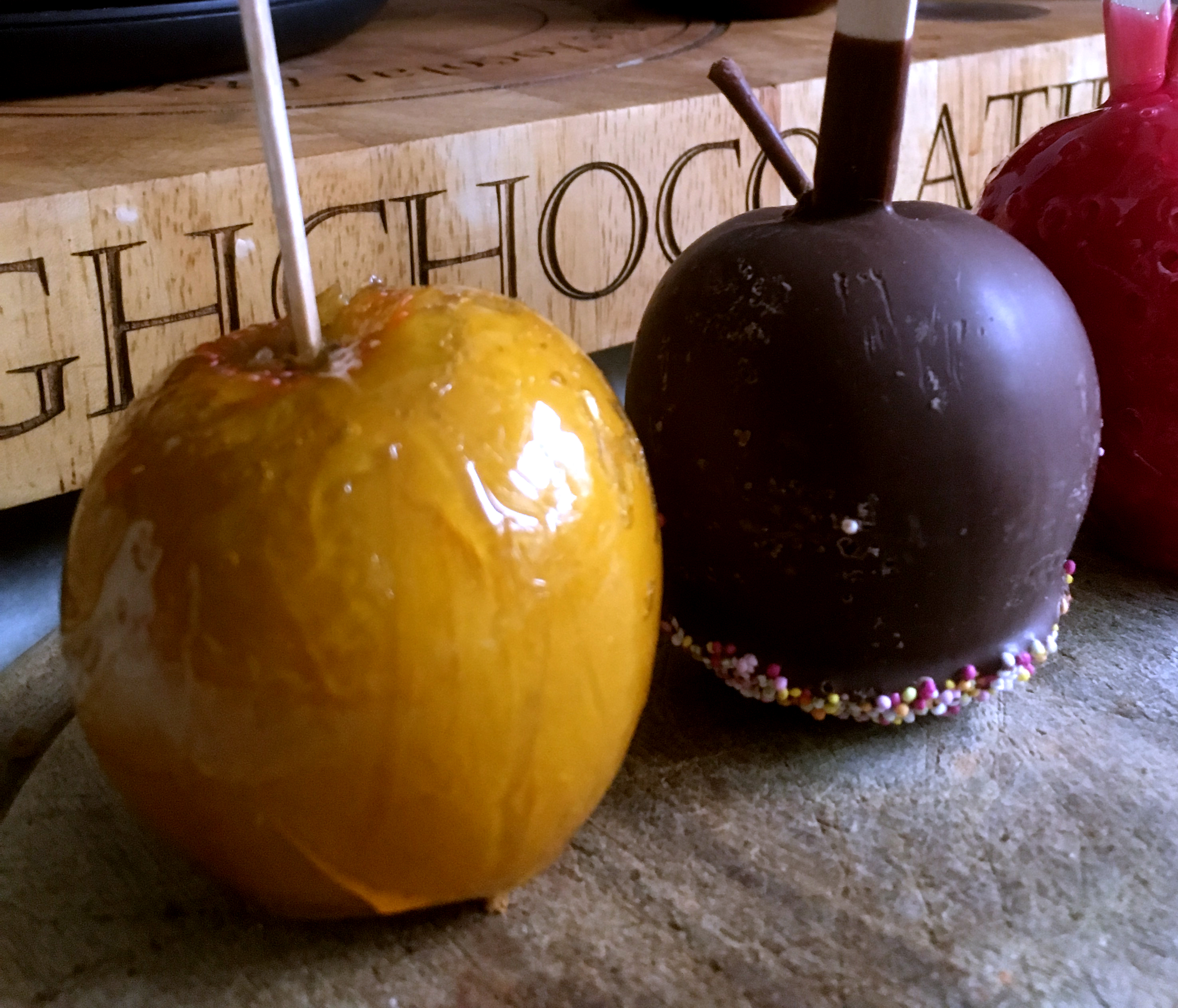It's that time of year again when the toffee apple is back in every coner shop.
Its a traditional seasonal treat that makes everone think about childhood, fairgrounds, fallen leaves, Guy Fawkes bonfires and winter parties.

- Toffee apples are called many other names.
-
The sugar-coated apple confection we call toffee apples are known as caramel apples in the U.S and Canada, in France they are called pommes d'amour (apples of love) and can found at many autum festivals and fetes all across France.
The practice of coating fruit in a sugar syrup dates back to ancient times, honey and sugar were used as preserving agents but most food historians generally agree that Toffee Apples can be traced back to the early 18th century, where they have been attributed to William Kolb in Newark Lincolshire who cis said to have reated the first toffee apple in 1908.
(But when i was in Dubia recently i learned that some culinary historians believe the tradition came from the technique used in Arabian households and markets to candy fruit as a way of preserving it.)
The Toffee apple was created by accident.
Again we have an happy accedent to thank, the story tells us that William Kolb a confectioner in Newark was looking for ways to expand sales during the Christmas season and used an brightly coloured sugar coated apple on a stick as a way to jazz up his shop window display. It didn’t take long for the new treat to take off and soon he was selling thousands of them each year.
Toffee apples are easiest to make in the autum.
It’s not just because of the plentiful apple harvest. A proper Toffee apple requires a hard sugar layer that doesn’t always set properly in hot or humid weather.
Traditional toffee apples have a red cinnamon flavoured coating.
Today, you can find a variety of different coating the toffee apples including chocolate and sprinkles at the fairs and festival. But a true toffee apple has a hard sugar coating coloured red and tasting of cinnamon.
Toffee apples all around the world.
From Brazil to Germany China to Ireland, local versions of the Toffee apple are eaten during the celebrations of a number of holidays starting with Halloween and all the way to Christmas.
The most common varieties of apple used to create these treats are Granny Smith which work best for two reasons. First, the tart flavour is a better contrast to the sweet sugar coating. Second, crisp apples hold up better under the heat and weight of the sugar coating.
They could be healthier than you thought.
An average home-made Toffee apple generally ranges from 215 to 286 calories and contains 0 to 3 grams of fat. Of course, these figures are entirely dependent on what you use to make the coating.
You may even own something that got its colourbecause of the toffee apple!.
William Kolb’s first window display created more than just a tasty treat, he created a new racy colour that has become synonymous with custom cars and pretty girls, since the 1950’s people have been painting their nails, or customising their guitars, motorcycle helmets, and their cars in the new candy apple red.
